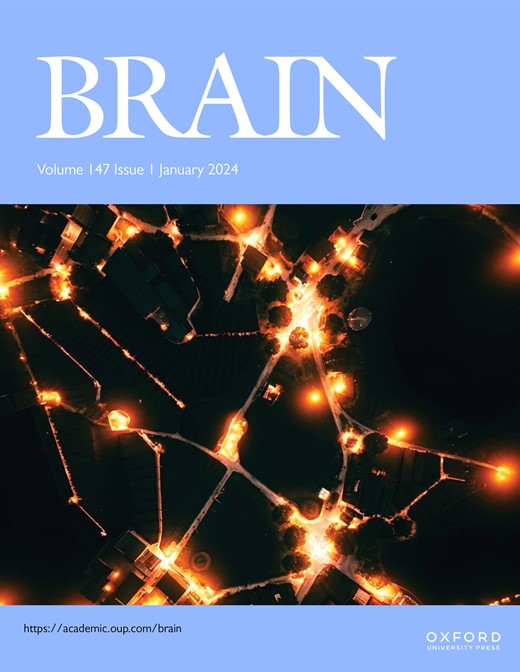MORC2的多效性来源于其表观遗传特征。
IF 10.6
1区 医学
Q1 CLINICAL NEUROLOGY
引用次数: 0
摘要
MORC2的杂合错义突变涉及各种临床实体,从早发性神经发育障碍到晚发性神经病。MORC2的表型异质性和多效性机制尚不清楚。在这里,我们分析了53名MORC2患者的血液和成纤维细胞DNA甲基化、转录组、蛋白质组和表型。我们确定了morc2特异性DNA甲基化表观特征,该特征在所有morc2相关表型中普遍存在,并在不同组织中保守。MORC2表观特征主要由启动子区域的DNA超甲基化组成,导致靶基因的转录抑制,从而产生MORC2特异性RNA特征。三种疾病相关基因——ercc8、NDUFAF2和FKTN——在不同水平上同时下调,反映了MORC2患者观察到的不同生化缺陷和临床表现。NDUFAF2的沉默解释了Leigh综合征的表现,而畸形特征是由于ERCC8的抑制。总体而言,我们发现致病性MORC2变异引起特异性表观特征,因此甲基化水平变异性及其对靶基因的抑制作用解释了MORC2相关疾病的多效性并预测了表型异质性。我们预测,表观遗传变异可能是其他孟德尔疾病多效性的基础。本文章由计算机程序翻译,如有差异,请以英文原文为准。
Pleiotropic effects of MORC2 derive from its epigenetic signature.
Heterozygous missense mutations in MORC2 have been implicated in various clinical entities, ranging from early-onset neurodevelopmental disorders to late-onset neuropathies. The mechanism underlying the phenotypic heterogeneity and pleiotropic effects of MORC2 has remained elusive. Here, we analyzed blood and fibroblast DNA methylation, transcriptomes, proteomes, and phenotypes of 53 MORC2 patients. We identified a MORC2-specific DNA methylation episignature that is universal across all MORC2-associated phenotypes and conserved across different tissues. The MORC2 episignature consists mainly of DNA hypermethylation in promoter regions, leading to transcriptional repression of target genes resulting in a MORC2-specific RNA signature. Concomitant downregulation of three disease-associated genes -ERCC8, NDUFAF2, and FKTN- at different levels mirrors the variable biochemical defects and clinical manifestations observed in MORC2 patients. Silencing of NDUFAF2 accounts for the Leigh syndrome manifestation, whereas dysmorphic features are due to the repression of ERCC8. Overall, we showed that pathogenic MORC2 variants cause specific episignature, whereby methylation level variability and its repression impact on target genes explains the pleiotropy and predicts phenotypic heterogeneity in MORC2-related disorders. We predict that epigenetic variation may underlie pleiotropy in other Mendelian disorders.
求助全文
通过发布文献求助,成功后即可免费获取论文全文。
去求助
来源期刊

Brain
医学-临床神经学
CiteScore
20.30
自引率
4.10%
发文量
458
审稿时长
3-6 weeks
期刊介绍:
Brain, a journal focused on clinical neurology and translational neuroscience, has been publishing landmark papers since 1878. The journal aims to expand its scope by including studies that shed light on disease mechanisms and conducting innovative clinical trials for brain disorders. With a wide range of topics covered, the Editorial Board represents the international readership and diverse coverage of the journal. Accepted articles are promptly posted online, typically within a few weeks of acceptance. As of 2022, Brain holds an impressive impact factor of 14.5, according to the Journal Citation Reports.
 求助内容:
求助内容: 应助结果提醒方式:
应助结果提醒方式:


